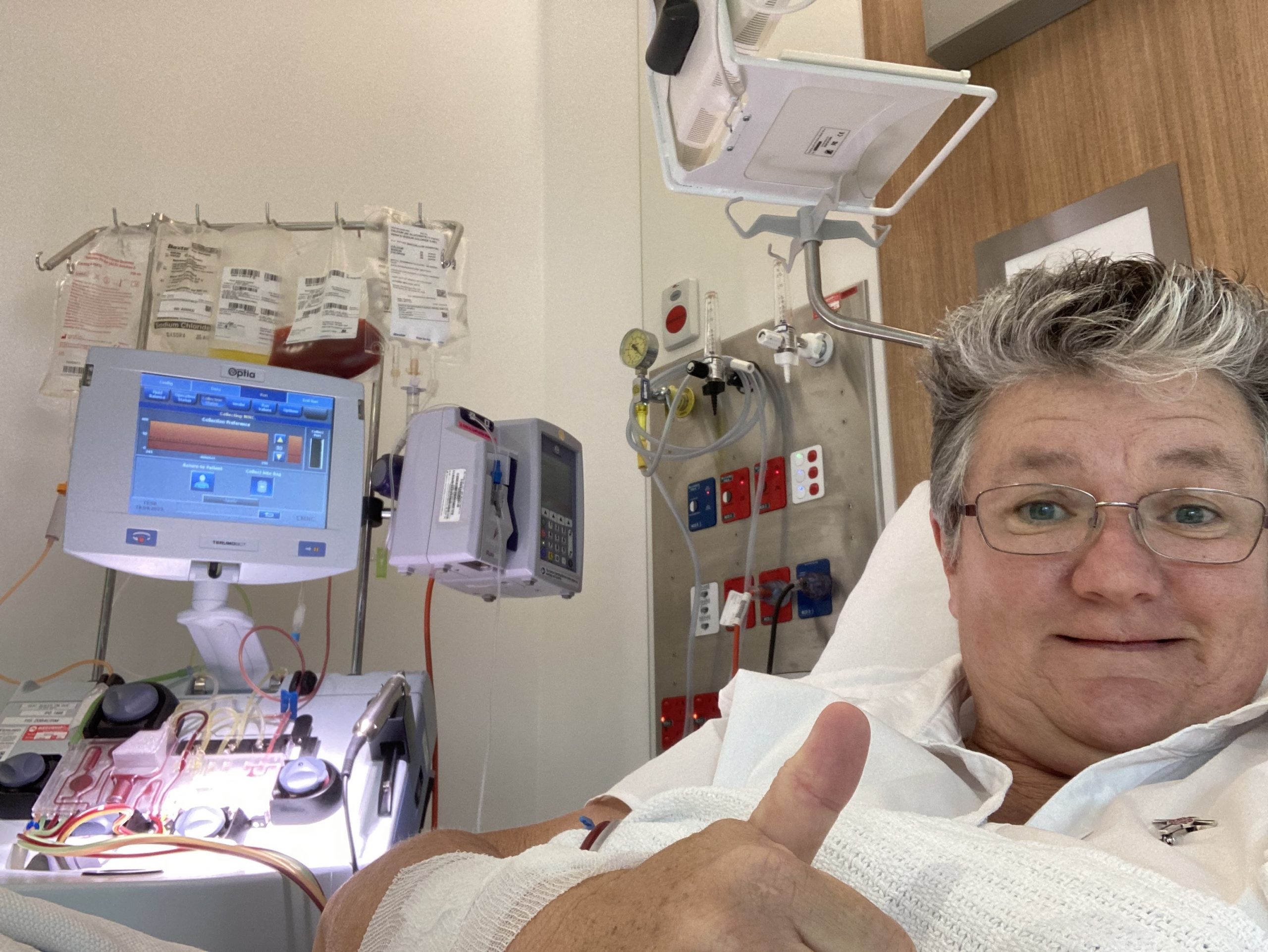Bone marrow donation a “chance to give life”
More than 25 years ago, Therese Mills signed up to the bone marrow registry in a spur of the moment decision while donating blood with a friend.
This year, the Missionaries of God’s Love sister received the call.
“They said I was a match for someone, and after they sent all the information through, I thought obviously I will go ahead with this.”
“I think it was obvious because it meant possibly saving someone’s life. And if someone is given a chance to survive, I want to do everything I can to give life.”
Therese said the process from there, facilitated by Strength to Give, was unexpectedly easy.
“Back in the day, bone marrow donations used to be quite severe,” she explained.
“But what they do now is get the stem cells which produce bone marrow in the recipient.”
After a series of blood tests and preparations, along with injections to boost her stem cell production, Therese was flown to Melbourne, where the hospital collected her cells.
“If they don’t get enough, then they put you in hospital overnight and give you a drug to skyrocket your stem cells again. Then if that isn’t enough, they will put you under general and that’s when they might go into your bone,” she said.
“Strength to Give Foundation told me that it’s less common to go under general these days. 90% of donations would be how I did it and about 10% are donated by the general anaesthetic way. I think what people are scared of is that the injections do make you feel a bit sick before the actual donation. It’s like a bad flu.”

Bone marrow donor Therese has urged others to sign up to the registry, saying the process was much simpler than she had expected.
Therese said the donation team had provided her with exceptional care throughout the process, walking the journey alongside her.
“You learn what happens with you and what happens with the other person,” she said.
“And when you watch what your recipient is going through, your flu symptoms are nothing really. They have their whole body completely drained of bone marrow. So, when you think of that, you think my headaches and body aches are nothing.”
“And then after it was done, and it was less invasive than you think, I thought oh man, everyone needs to know about this because they are desperate for people to go on the registry. For people who receive the bone marrow, it’s often their only chance of a cure for their illness.”
The bone marrow can only survive 48 hours outside the blood, so a courier was on standby to protect the precious cargo as it travelled across the globe.
“It is a phenomenal process, and I would absolutely do it again,” Therese said.
“We are all kind of called to give life to others in one way or another, whether it be through our faith or loving others. I think this can just be one of the ways we give life to other people. Like we can give life to other people by living them or sharing Jesus and that kind of thing. My faith gave me encouragement to pray for this person that the process will be successful.”
The bone marrow donation is anonymous – at least for the first two years, after which the donor and recipient can choose to know one another if they have stayed in contact through letters.
“I do know the bone marrow went to the UK, but that’s all I know,” Therese said.
“It was a beautiful experience knowing I could pray for my recipient. I can remember just praying that these stem cells will give them life.”
- If you are interested in more information about becoming a bone marrow donor, visit the Strength to Give website at https://strengthtogive.org.au/


